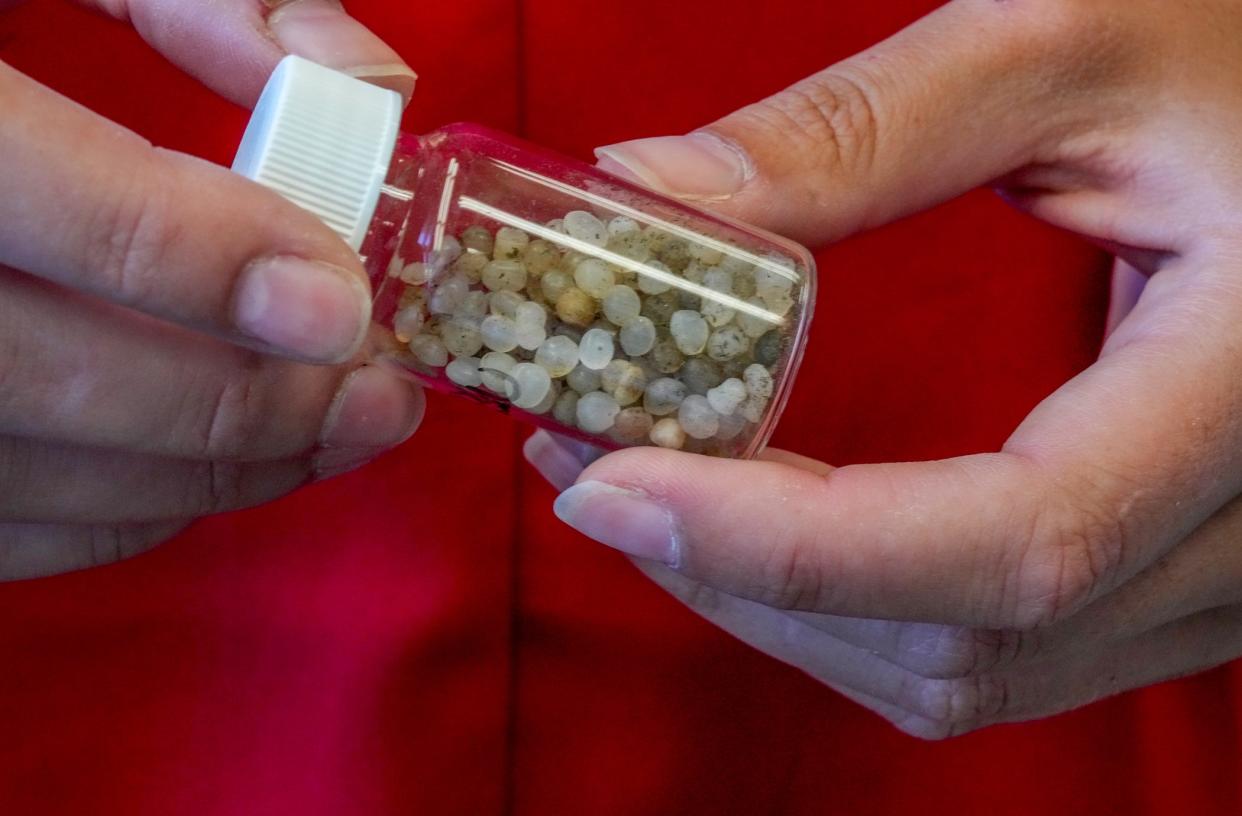Cigarette butts are no longer the most common litter on beaches. Here's what replaced them.
PROVIDENCE – In every year since Rhode Island started participating in the International Coastal Cleanup more than 35 years ago, cigarette butts outnumbered every other type of trash collected by volunteers along the state’s more than 400 miles of shoreline.
But that changed in 2023, when plastic debris took over in top spot in the three-month effort to pick up litter along beaches, marshes and riverbanks and catalog what was found. For the first time, more plastic trash – pieces of takeout containers, food wrappers, bottle caps, stirrers, straws and utensils – was found than anything else.
“We’re finding plastic in the wrack line. We’re finding it in the soil. The plastic pieces keep flowing in. And they’re accumulating everywhere,” said July Lewis, who manages the annual event for Save The Bay.
The Providence nonprofit released a report this week on the cleanup, which was held in the fall. It’s just the latest evidence of the growing problem posed by plastic pollution in Rhode Island. In a study last year, researchers at the University of Rhode Island estimated that the top two inches of sediment in Narragansett Bay contain more than 1,000 tons of microplastics.
The items collected by the coastal cleanup’s 2,830 volunteers were typically larger than the tiny, unidentifiable particles found in the Bay floor, said Lewis, volunteer and internship manager for Save The Bay. They represented an earlier stage of the plastic pollution problem, pieces that had fragmented but not yet broken down into microplastics.

Amounts of plastic garbage increasing over time
The amount of plastic they found – 23,468 pieces versus 21,165 cigarette butts – represents only a small fraction of what litters the shoreline. Participants only collected what they could pick up. In some places, the plastic pieces were too small or too numerous.
“It’s really just the tip of the iceberg,” said Lewis, who’s been overseeing the cleanup with Save The Bay for a decade and did the same job for the Audubon Society of Rhode Island when it managed the event.
Lewis wasn’t surprised by the results. In part, that’s because fewer people are smoking and there are laws restricting smoking on Rhode Island state beaches. But it’s primarily because she’s been seeing more and more plastic garbage every year during the cleanup.
That’s consistent with what’s being seen elsewhere. Every year as part of the International Coastal Cleanup, volunteers all around the world pick up trash along the shore and record what they find. In 2013, in response to the growing numbers of plastic pieces being reported, the Ocean Conservancy, which organizes the international effort, added a new “tiny trash” category to the data cards that participants use.
More: There is a 'shocking' amount of microplastics in Narragansett Bay. Here's what that means.
Plastic pollution is a relatively recent problem
Plastics enter rivers, bays and oceans through storm drains during heavy rains or get littered along shorelines. Others are flushed down toilets or washed down drains from homes and factories. Still more come from lost or abandoned fishing gear. They break down into smaller and smaller pieces over time but never disappear. Because so many rivers and streams across the 2,000-square-mile watershed in Rhode Island and Massachusetts drain into Narragansett Bay, it makes sense that it would be full of so much plastic waste.
“You can throw a bottle cap out on the street in Worcester, and it’ll go into the rivers and end up in the Bay,” said Lewis.
She urged people to stop littering to help cut down on the trash problem. A bottle redemption program that would improve recycling would also help. But Lewis also says there isn’t a single solution to the problem when plastics are so prevalent in consumer society these days.
She’s gone back to look at records of the earliest efforts by Save The Bay to pick up garbage on the shoreline that predate the start of the International Coastal Cleanup. Reports from the 1970s barely mention plastic garbage. Back then, the focus was on cans and bottles and bigger items that were dumped, like tires, mattresses and appliances.
Things have gotten better in some ways, but new problems have arisen.
“If somebody from 1970 came and looked at our wrack line today, they wouldn’t know what to make of it,” Lewis said.
This article originally appeared on The Providence Journal: Plastic debris is RI's new number one litter item on beaches
